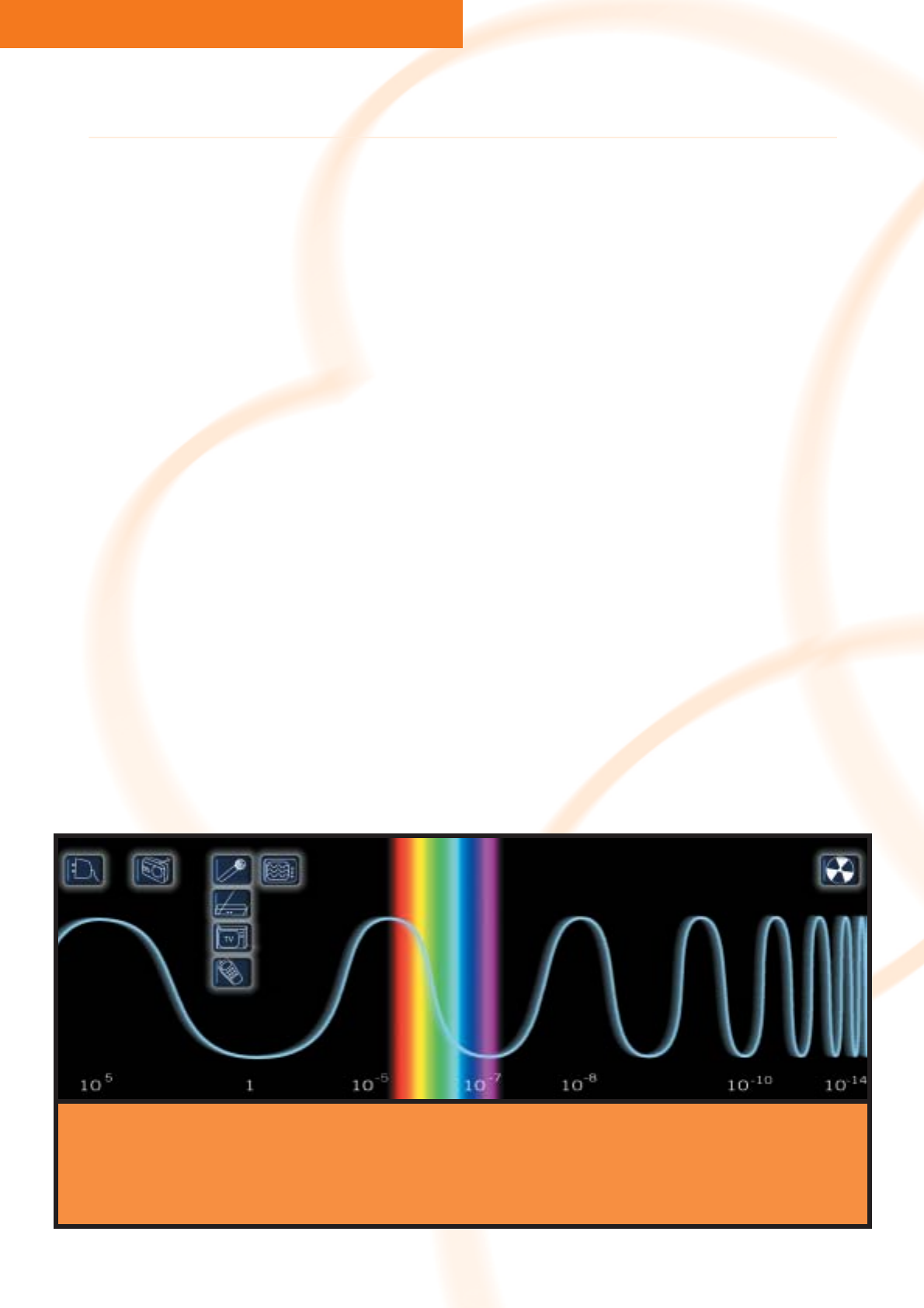
Wireless transmission technology is based on
the physical principles governing the propa-
gation of electromagnetic waves. Radio, tele-
vision, mobile telephone communications, mi-
crowaves, and light are all based on electro-
magnetic waves with different wavelengths.
Short waves have completely different cha-
racteristics, and are propagated as high-fre-
quency signals in the form of radio waves or
X-rays, for instance, traveling incredible
distances through the universe and still
detectable after millions of years.
Speech and other sound signals, on the other
hand, are not electromagnetic waves, and
require a high-frequency carrier signal for
wireless transmission: it is this carrier signal
that serves to transport the audio signal
through the air. The process that does the
trick is called modulation: this is similar to
the audio signal getting into a taxi in a scien-
ce-fiction movie (climbing into a radio-fre-
quency signal), because the physical laws
that now come into effect are similar to the
highway code of the future! This metaphori-
cal example is not entirely analogous to the
physical reality, but it may give a clearer pic-
ture.
What happens to our audio signal once it has
entered our metaphorical taxi in order to tra-
vel from the transmitter to the receiver? First
it has to tell the driver its destination, for
example: “Please take me the fastest way
from transmitter to receiver.” Since he has
been asked to take the fastest route, the taxi
driver will try to select this route. However,
the thing is that we are not alone on our jour-
ney, but have to share the roads with a num-
ber of other (wireless) road users: in this
situation the following rules apply:
Rule no. 1:
The stronger your radio signal is, the better
chance it has of reaching its destination. In
our metaphorical example, TV stations do not
travel in radio-wave taxis in one lane, but in
gigantic trucks occupying several lanes at
once. The only solution here is to avoid them
by selecting another frequency band, in our
example by taking another road so as not to
be run over by them!
Rule no. 2:
Keep your distance and stay in your lane! Our
taxi needs a road lane on which it can travel,
and must keep its distance from vehicles in
the adjacent lanes so as to avoid a collision,
which we refer to in technical terms as radio
interference. Unfortunately, however, we are
also obliged to share our lane with signal
waves from mobile telephones, television
sets, microwave ovens and radio sets, and are
permanently faced with congestion and traf-
fic jams. These other signal waves continual-
ly come dangerously close to our taxi, and we
are continually in danger of colliding with
other road users: it is therefore essential that
we keep our distance!
Rule no. 3:
The higher the frequency, the more “lanes”
there are available, and the risk of various
radio signals colliding with one another is
correspondingly lower. This is why all
WMS 40 systems work in the short-wave UHF
range, which ensures extremely reliable
transmission and optimal signal quality.
AKG has specified various radio frequencies
for its WMS 40 wireless systems in order to
ensure secure and reliable transmission in
the UHF range, normally enabling four
systems to be operated simultaneously. This
means that we are able, as it were, to send
our audio signals from transmitter to receiver
using very fast taxis on four safe road lanes.
This is particularly important when transmit-
ting speech and music in order to avoid
unwanted signal dropouts (see illustrations
on facing page and also the illustration of
signal characteristics on page 7). The maxi-
mum number of channels that can be opera-
ted simultaneously varies depending on
national licensing regulations.
The licensing regulations issued by the rele-
vant regulatory authorities for telecommuni-
cations systems also vary from country to
country. Your local AKG supplier will be able
to tell you whether you require a license to
operate a WMS 40 wireless system in your
country.
8 www.akg.com
Wavelength
The properties of a wave depend primary on its wavelength. Wavelength is the term used to refer to the distance between points at which the wave has the same phase in two consecutive
cycles. The radio waves of wireless microphone systems, and also television and radio sets, mobile telephones and microwave ovens, have a wavelength of about a meter. The wavelength of
visible light varies between 770 and 400 nm (1 nm = 1 thousandth of a meter), whilst X-rays, gamma rays, and cosmic radiation have even shorter wavelengths.
AKG WMS BASICS
HOW RADIO SIGNALS ARE TRANSMITTED
HOW WIRELESS TECHNOLOGY WORKS


















